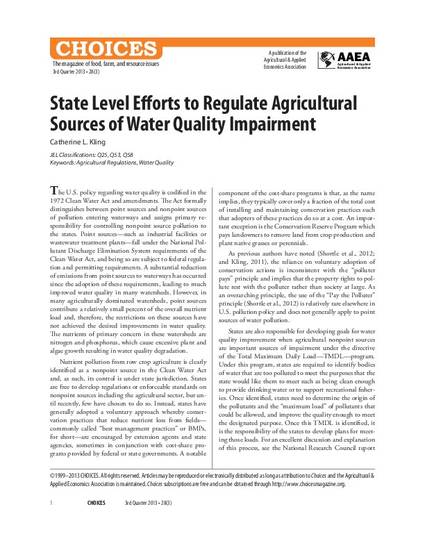
The U.S. policy regarding water quality is codified in the 1972 Clean Water Act and amendments. The Act formally distinguishes between point sources and nonpoint sources of pollution entering waterways and assigns primary responsibility for controlling nonpoint source pollution to the states. Point sources—such as industrial facilities or wastewater treatment plants—fall under the National Pollutant Discharge Elimination System requirements of the Clean Water Act, and being so are subject to federal regulation and permitting requirements. A substantial reduction of emissions from point sources to waterways has occurred since the adoption of these requirements, leading to much improved water quality in many watersheds. However, in many agriculturally dominated watersheds, point sources contribute a relatively small percent of the overall nutrient load and, therefore, the restrictions on these sources have not achieved the desired improvements in water quality. The nutrients of primary concern in these watersheds are nitrogen and phosphorus, which cause excessive plant and algae growth resulting in water quality degradation
Available at: http://works.bepress.com/catherine_kling/11/

This article is from Choices 28 (2013): 1–4. Posted with permission.